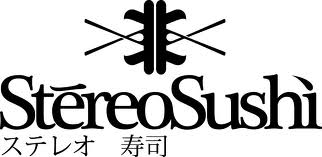Photojournalism is a
particular form of journalism (the collecting, editing, and presenting of news
material for publication or broadcast) that creates images in order to reveal a
story behind it. Photo is a
representation of a person or scene taken by a camera on light-sensitive
material. The photo tells a complete story of an image. As we know, journalist is a medium for
the people in knowing the news. It is everywhere in the world, either in the
television news, newspaper and etc. Journalism
is the timely reporting of events at the local, provincial, national and
international levels.
Instead of words a photojournalist uses pictures to
tell a story. They also can combine their images with some text to give brief
information on the details or events. This
known as caption as earlier I explain in week 8. There is a different between
photographer and photojournalist. Photographer are only tend to capture the
people, thing o place only, while photojournalist take the picture which got an
action or emotion that give a little bit information inside it such as shout,
kick, cries, explosion and etc that could create a story. They also tend to
take that noun picture also but still need a story behind it also.
Thus, there is an ethic for the photojournalist what
they need to do or not to do, so that it did not bring the misinterpretation by
the audiences through their images. There are some rules and regulation for the
photojournalist to be followed below,
1. Take the picture – tell the truth.
2. Do not manipulate the pictures
With our modern technology, sometimes people are tending to modify the pictures. As a result is would give an opposite story of the pictures, where is the original element of the photo has been changed. This is because the photojournalists want to enhance its impact. As stated by Lester (1995), “But because of computer technology, digital manipulations are relatively easy to accomplish, hard to detect and perhaps more alarming, alter the original image so that checking the authenticity of the picture is impossible”
3. Avoid stereotyping and bias of the person and groups in the work.
This only showing that the journalism are being unprofessional, racist, ignorant or lazy when they capture pictures of ethnic, gender, physical characteristic, sexual preference and job-related cultural groups.
4. Give respect and dignity on the subject.
Give some kindness and concern to victims or subjects on the events.
5. Maintain the elements of the photo when editing.
This is to avoid the wrong idea of the subjects story.
Therefore, photojournalism must follow the code of the ethics since it could shaped the people perception and interpretation towards the images shown. According to Bersak (2006), the National Press Photographers Association's Code of Ethics “Photographic and video images can reveal great truths, expose wrongdoing and neglect, inspire hope and understanding and connect people around the globe through the language of visual understanding. Photographs can also cause great harm if they are callously intrusive or are manipulated.”
References:
- Bersak, D., R. (2006). Ethics in Photojournalism: Past, Present, and Future. Retrieve on November 10, 2011 from http://web.mit.edu/drb/Public/PhotoThesis/
- Lester, P. M. (1995). Photojournalism Ethics Timeless Issues. Retrieved on November 10th, 2011 from http://commfaculty.fullerton.edu/lester/writings/photoethics.html
- National Press Photographers Associations. (2011). Code of Ethics. Retrieved November 10 2011, from http://www.nppa.org/professional_development/business_practices/ethics.html















